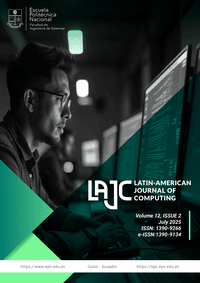Hybrid CNN-Transformer Model for Severity Classification of Multi-organ Damage in Long COVID Patients
Keywords:
COVID-19, Chest X-rays, CNN, Vision Transformer, Severity Classification, Deep LearningAbstract
Global COVID-19 spread has necessitated the use of rapid and accurate diagnostic procedures to support clinical decision-making, particularly in resource-limited environments. In this work, a hybrid deep model combining Convolutional Neural Networks (CNN) and Transformer architecture is proposed to diagnose COVIDx CXR-3 dataset chest X-ray images into three classes of severity levels: Mild, Moderate, and Severe. The methodology incorporates data preprocessing techniques such as resizing, normalization, augmentation, and SimpleITK organ segmentation. A DenseNet121-based CNN extracts local features, while global dependencies are extracted by a Vision Transformer. The features from both are fused and fed to a classification head to generate the predictions. The training was done in PyTorch with learning rate 0.0001, batch size 32 and optimized with Adam optimizer for 50 epochs. Performance measures like Accuracy, Precision, Recall, F1-Score, and Confusion Matrix were computed to measure performance. Results show that the CNN-transformer model which outperforms the CNN-only model that achieved 88%. This integration has demonstrated a better capability in severity classification and great potential in helping clinicians prioritize care, optimize treatment plans, and allocate resources, thereby improving outcomes in COVID-19 management.
Downloads
Published
Issue
Section
License
Copyright Notice
Authors who publish this journal agree to the following terms:
- Authors retain copyright and grant the journal right of first publication with the work simultaneously licensed under a Creative Commons Attribution-Non-Commercial-Share-Alike 4.0 International 4.0 that allows others to share the work with an acknowledgement of the work's authorship and initial publication in this journal.
- Authors are able to enter into separate, additional contractual arrangements for the non-exclusive distribution of the journal's published version of the work (e.g., post it to an institutional repository or publish it in a book), with an acknowledgement of its initial publication in this journal.
- Authors are permitted and encouraged to post their work online (e.g., in institutional repositories or on their website) prior to and during the submission process, as it can lead to productive exchanges, as well as earlier and greater citation of published work.
Disclaimer
LAJC in no event shall be liable for any direct, indirect, incidental, punitive, or consequential copyright infringement claims related to articles that have been submitted for evaluation, or published in any issue of this journal. Find out more in our Disclaimer Notice.










